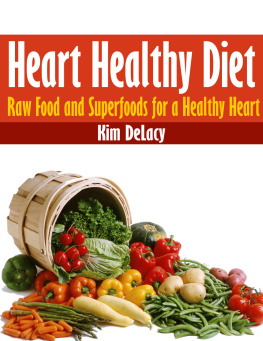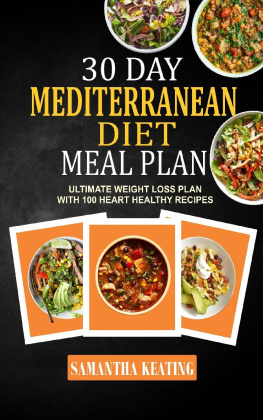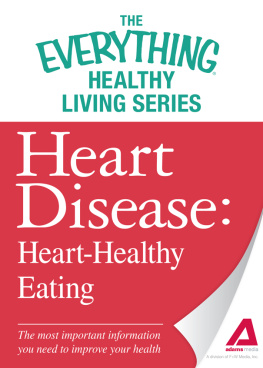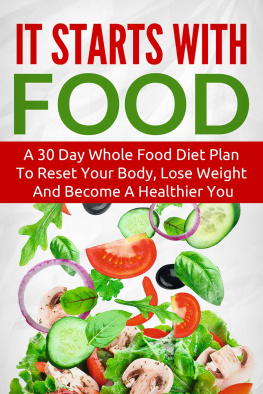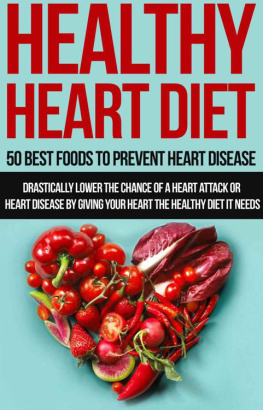Table of Contents
Heart Healthy Diet
Raw Food and Superfoods for a Healthy Heart
Kim DeLacy
Copyright 2013 Kim DeLacy
All rights reserved.
Heart Healthy Diet Introduction
There are many benefits to eating a heart healthy diet aside from helping the heart to be strong and healthy. It just stands to reason that if the heart is healthy then the rest of the body will be likewise. If another part of the body is ill, it affects the heart. Therefore, a heart healthy diet is also a "whole body healthy diet" as well. Eating right will help to make you healthier it will also add years to your life.
The main reason people diet is to lose weight or maintain weight loss. Often, the excessive weight causes health issues like cardiovascular conditions. When eating a heart healthy diet you are limiting the caloric intake and forcing the body to survive on what it needs rather than slathering on the pounds left behind from junk foods. Overweight people experience more issues with arthritis, lack of energy, which results in lack of exercise and stress on the immune system, which makes the body sick.
A heart healthy diet will work to make the excessive fat and weight drop off while beefing up the immune system. The result is a body that is lean and strong with the ability to fight off infections and prevent certain detrimental health conditions. A heart healthy diet will limit the intake of fats and cholesterol, which aids in the prevention of atherosclerosis, thus helping to prevent strokes and heart issues.
High blood pressure is a side effect of weight gain and excessive weight. Having hypertension makes it necessary to be on a heart healthy diet, which has 2 effects, to lose the weight and to help bring the blood pressure to normal levels. If high blood pressure is left unattended, it causes cardiovascular disorders and strokes. Eating a nutritious diet will help the body to shed the pounds that cause high blood pressure and helps to strengthen the heart. Normal blood pressure should be around 120/80, anything above that is getting too high. One of the first things a physician will tell you is to lose weight and work on eating a heart healthy diet.
Cholesterol is something else a heart healthy diet will help to manage. High cholesterol is like high blood pressure and can lead to cardiovascular disease and stroke. Again, a physician will tell you if your cholesterol is high to diet to bring it down, before trying medications. High cholesterol causes a build up in the veins and arteries. When this happens, it restricts the blood flow and causes heart attacks and strokes. Diet is the best preventative, coupled with exercise and good lifestyle habits.
How does dieting help to make the heart healthy? First, understand what the heart does. It is an organ and a muscle that pumps blood throughout the entire body. Any discrepancy in the blood flow will cause a bodily system to malfunction and fail. If the heart is doing its job then the body has a better chance of staying healthy and strong. If you eat a heart healthy diet, you are taking in nutrients that work with the heart and the immune system to make it stronger. Since the heart is a muscle, you also need to exercise to strengthen the muscle.
The heart pumps the blood through the body in a system of veins and arteries, capillaries and blood vessels that carry the blood to all the part of the body. By eating right, you are making sure the interior walls of this system will remain clear and able to continue to carry the blood.
If you eat the wrong foods, the body will not act right, it will take what it can from the foods, and that is what results in fat, which leads to high blood pressure, which leads to heart disorders. Foods high in saturated fats cause the body to retain the bad cholesterol or LDL, the kind that builds up plaque in your veins and arteries. Trans fats are just as bad, a manmade substance derived from natural foods, but processed to become a food that is bad to consume. By not eating foods high in saturated and trans fats you are helping the body to not produce too much of the LDL. There are good fats called unsaturated fats, which are actually beneficial for the body. These are the fats found in nuts and fish. You will find recipes below that contain walnuts, almonds, and salmon, some of the best sources for this healthy unsaturated fat. Heart healthy diets will limit the inclusion of foods like egg yolks, butter and organ meats, even shrimp. These are found to increase the LDL.
Salt is another culprit of high blood pressure that leads to heart issues. If you are going to do on a heart healthy diet, you can be assured the recipes will have minimal salt. The body does need a daily dose of salt, so going without it completely is not recommended. A healthy dose of salt intake is around 2300 mg of sodium a day. The experts claim that older people need less and if you are on blood pressure medications, you need to discuss your salt intake with your physician.
Finally, one very important aspect to having a healthy heart aside from diet is exercise. Exercise is good for the whole body, and especially the heart, since it too is a moving muscle. A weak heart will give out before its time. To make it strong you need to do physical activities to cause it to pump more. A strong heart is able to get the blood from the tips of the toes to the top of the head and back without incident. Just incorporating a mere thirty minutes of light aerobics, three times a week, will help to strengthen the heart. The more you exercise, the more you diet, the more you will feel like being physically active.
Section 1: Raw Food Cookbook Introduction
The raw food diet is rapidly gaining in popularity, both as a short term cleanse and as a lifestyle. In any major city (and quite a few mid-sized cities as well), there are several raw food restaurants to choose from, exposing ever more people to the benefits of raw foods as well as educating the public that a raw food diet doesnt have to mean being consigned to glumly munching on salad after salad.
As youll learn in this cookbook, you can enjoy a widely varied raw food diet, although it does take some creativity and a willingness to do a little bit of work. You will have to do a lot of your own cooking, but raw food adherents are more than convinced that the extra time spent in the kitchen more than pays for itself in the form of better health.
One of the scientific concepts underpinning the idea of eating raw is that the process of cooking most foods destroys much of their nutritional content. Even heating most foods to relatively low temperatures of around 120 degrees Fahrenheit is enough to cause the enzymes that they contain to break down and for that reason, many people choose to reap the maximum nutritional content of the food that they eat by choosing not to cook it. While you will see many recipes in this book which call for warming or wilting various ingredients or entire dishes, this is done at very low temperatures of 100 115 degrees Fahrenheit in order to prevent the ingredients from losing their nutritive value.
Youll probably notice that many of the recipes here can be made using a dehydrator; if youre serious about eating a raw food diet for the long term, this is a kitchen appliance which you may want to invest in. In every recipe which calls for a dehydrator, however, weve also given alternate directions for how to prepare the ingredients or dishes in a conventional oven instead. However, you may want to get a dehydrator in any case, since its not terribly energy efficient to run your oven for many hours (sometimes as long as 8 to 12 hours).

